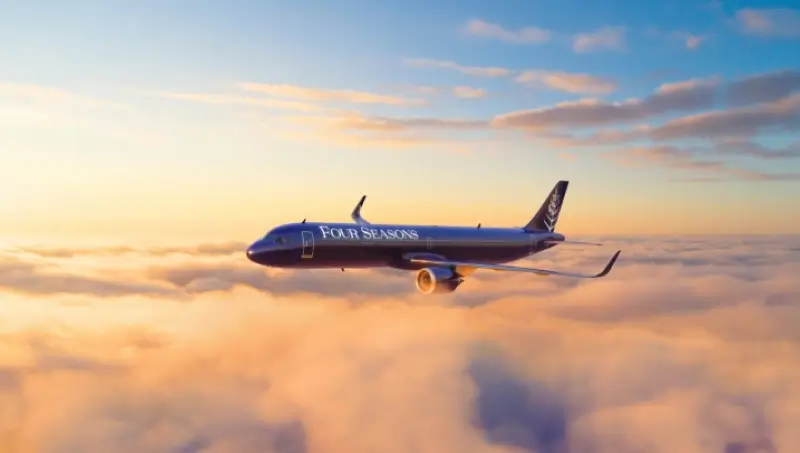
Disrupted travel in 2014
Jan 05, 2014

In 2014, travel was significantly disrupted by a series of global events and crises. The outbreak of the Ebola virus in West Africa raised health concerns, leading to travel restrictions and heightened scrutiny at airports. Meanwhile, geopolitical tensions, particularly in Ukraine and the Middle East, contributed to an unstable environment that affected flight routes and safety perceptions. Additionally, natural disasters, such as typhoons and hurricanes, caused widespread cancellations and delays. These factors combined to create a challenging landscape for travelers, prompting many to reconsider their plans and seek alternative modes of transportation or destinations.
In 2014, the world witnessed significant disruptions in travel due to various factors ranging from natural disasters to geopolitical tensions. These disruptions not only affected travelers but also had a profound impact on the travel industry. Understanding these disruptions, their causes, and their effects is crucial for anyone involved in travel planning or management. This article will explore the key events that disrupted travel in 2014, supported by data and insights that illustrate the magnitude of these disruptions.
Major Events Disrupting Travel
The year 2014 was marked by several high-profile incidents that caused significant travel disruptions. Some of the most notable events included:
- The outbreak of the Ebola virus in West Africa
- Geopolitical tensions in Ukraine
- The disappearance of Malaysia Airlines Flight MH370
- Severe weather events across the United States and Europe
Ebola Outbreak and Travel Restrictions
The Ebola virus outbreak in West Africa became a global concern in 2014, leading to widespread travel restrictions. Countries like the United States and the United Kingdom implemented stringent measures to curb the spread of the virus. These measures included:
- Screening of passengers arriving from affected areas
- Advisories against travel to Ebola-affected regions
- Increased health checks at airports and ports
According to the World Health Organization, the outbreak led to a sharp decline in travel to West Africa, with some airlines suspending flights entirely. The impact on tourism and business travel was significant, leading to economic losses in the region.
Geopolitical Tensions in Ukraine
In 2014, the crisis in Ukraine escalated following Russia's annexation of Crimea. This geopolitical tension resulted in travel advisories from various governments. Tourists and business travelers were advised to avoid Ukraine due to safety concerns. The impact of this conflict on travel can be illustrated in the following table:
| Month | Travel Bookings to Ukraine | Travel Advisory Status |
|---|---|---|
| January | 15,000 | No Advisory |
| March | 5,000 | Travel Advisory Issued |
| June | 2,000 | Heightened Advisory |
| September | 1,500 | Travel Advisory Remains |
This table highlights the decline in travel bookings to Ukraine as the situation deteriorated, showcasing how quickly political instability can affect travel trends.
Malaysia Airlines Flight MH370
The mysterious disappearance of Malaysia Airlines Flight MH370 in March 2014 shocked the world and raised serious concerns about aviation safety. The incident led to increased scrutiny of airline operations and airport security. Travelers became more cautious about flying, particularly in overflown regions where geopolitical tensions were evident.
In the aftermath of the incident, many airlines saw a dip in passenger numbers, as trust in air travel was shaken. This event underscored the importance of "referrerAdCreative" strategies in the travel industry, as airlines and travel agencies worked diligently to reassure customers and maintain bookings. The need for effective communication and marketing became paramount.
Severe Weather Events
In addition to health crises and geopolitical tensions, 2014 also saw severe weather events that disrupted travel across the globe. Extreme snowstorms in the United States resulted in flight cancellations and delays, particularly in major hubs like New York and Chicago. Similarly, heavy rainfall and flooding in Europe caused transportation networks to be severely affected.
The following chart illustrates the impact of severe weather on flight disruptions in the United States during key months of 2014:
| Month | Flight Cancellations | Percentage of Total Flights |
|---|---|---|
| January | 20,000 | 10% |
| February | 15,000 | 7% |
| March | 10,000 | 5% |
| December | 25,000 | 12% |
This data shows how severe weather can significantly impact travel, leading to increased cancellations and delays, thus affecting overall passenger satisfaction and airline revenues.
Conclusion
The travel disruptions experienced in 2014 serve as a stark reminder of how interconnected our world is and how quickly situations can change. From health crises and geopolitical conflicts to severe weather, the travel industry must remain vigilant and adaptable. For businesses, understanding the importance of "referrerAdCreative" is essential in communicating effectively with customers during times of uncertainty. As we move forward, the lessons learned from 2014 can help shape a more resilient travel industry that is better prepared for future challenges.
Related Articles

Explore Thailand: The Best Islands to Visit for Paradise, Adventure, and Relaxation

The Ultimate Guide to the Best Islands in Thailand for Your Next Getaway

Do babies need passports? How to get a passport for a newborn

How to get a U.S. passport fast: here’s how to expedite the process

What is Mobile Passport Control: 5 reasons why you should use it

SENTRI vs. Global Entry: A detailed guide

Do you need a passport to go to the Bahamas? Let’s find out

Do you need a passport to go to Mexico? A detailed guide

Do you need a passport to go to Canada? We got the answer

Do You Need a Passport for a Cruise: An Essential Travel Guide

Booster Seat Requirements: All the Rules to Follow in Your Rental Car

What Are the World’s Most Powerful Passports, and How Does Yours Rank?

How to Take a Passport Photo at Home: A Helpful Guide

You've got to have heart! Southwest's new livery

Your opinion: Should water be free on low cost carriers?

Young women bolder than guys as solo travellers
